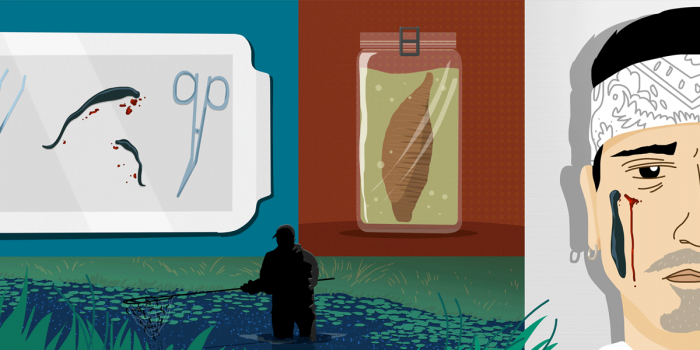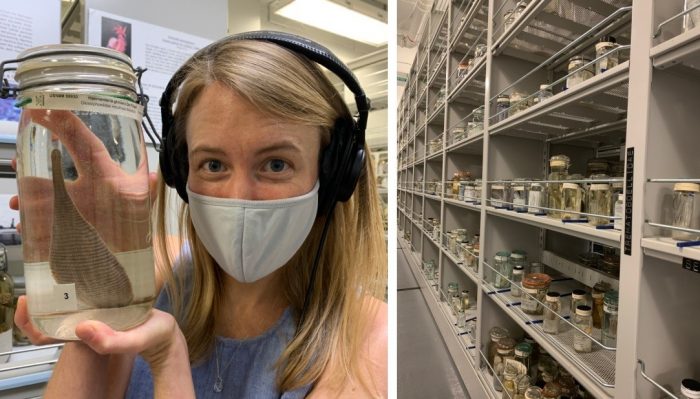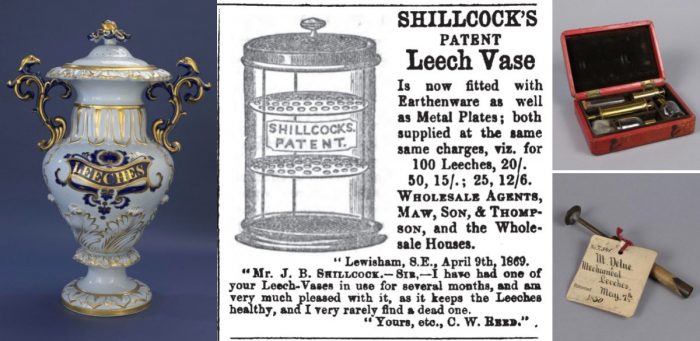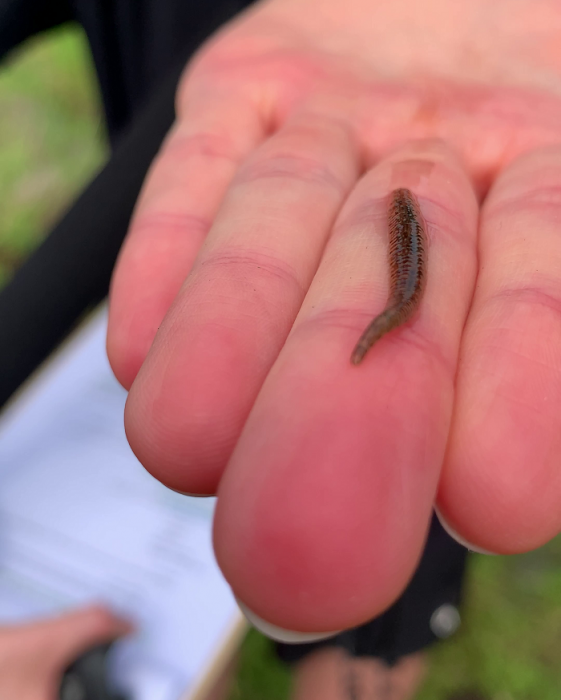Bloodsuckers!
Or, How I Learned to Stop Worrying and Love the Leech

Leeches don’t get a lot of love. They’re slimy, wriggly, and, well, they suck — blood that is. But there’s a lot to learn about the lowly leech. Led by a troupe of Smithsonian experts, we’ll discover how these toothy hangers-on wormed their way into medical practices, performance art, and EVERY human cavity. Yes, even that one. It’s a journey of discovery from the swamp to the stage and deep into the vaults of the Smithsonian. And it just may leave you with a little more appreciation (dare we say, love?) for the bloodsuckers.
This time on Sidedoor, we’ll sink our teeth into medical history, explore thought-provoking performance art, and trek into a murky swamp in search of the secret life of leeches. Along the way, we’ll see how these predatory worms have inspired innovation, lead to major medical breakthroughs, and are still surprising us after all these centuries.
Listen now
But wait! There’s more!

Floor to ceiling shelves at the National Leech Collection, Smithsonian Museum Support Center contain over 27,000 leech specimens from over 100 countries. Photographs by James Morrison.
Speakers
- Roberto Sifuentes – performance artist, fellow with the Smithsonian Artist Research Followship, and the Chair of Performance at the School of the Art Institute of Chicago
- Aram Han Sifuentes – performance artist, “leech wrangler,” and adjunct professor at the School of the Art Institute of Chicago
- Anna Phillips – research zoologist and curator at the Smithsonian’s National Museum of Natural History
- Rachel Anderson – museum specialist for the Division of Medicine and Science at the Smithsonian’s National Museum of American History
- Josh Franco – National Collector at the Smithsonian Archives of American Art, and a committee member for Smithsonian Artist Research Fellowship

By the mid-19th century, some doctors had started turning away from live leeches in favor of “artificial leech” bloodletting tools and kits. Images courtesy of the Smithsonian’s National Museum of American History.
Links & Fun Stuff
- Not all leeches are out for your blood! Some prefer the blood of reptiles, or would rather snack on alge or earthworms. Even when leeches prefer mammalian blood, most aren’t specifically seeking out humans (but if you want to stick your neck out, they’ll be happy to oblige!).
- Learn more about the Smithsonian Artist Research Fellowship (SARF), which brings artists together with museums, collections materials, and scholars to research and develop new artistic projects. Meet some of SARF’s current fellows and explore exhibitions featuring artists from the program.
- In 2015, Smithsonian research zoologist Anna Phillips was instrumental in the discovery of Macrobdella mimicus, the first new species of leech to be identified in over 40 years. Read more about this research (and see a specimen) in an article from Smithsonian magazine.
- Watch Lizzie and Aram Han Sifuentes perfect the “leech dance” while wading through wetland ponds at the Smithsonian Environmental Research Center.
- Why was bloodletting such a common cure-all in the 18th and 19th centuries? The Science History Institute delves into the medical theory and economics behind the trend.
- Believe it or not, leeches are still used in medical practice today (though far less frequently than in centuries past). University Hospitals explains how leeches are still saving limbs and lives.

Posted: 21 October 2021
-
Categories:
Collaboration , Education, Access & Outreach , Feature Stories , Science and Nature






